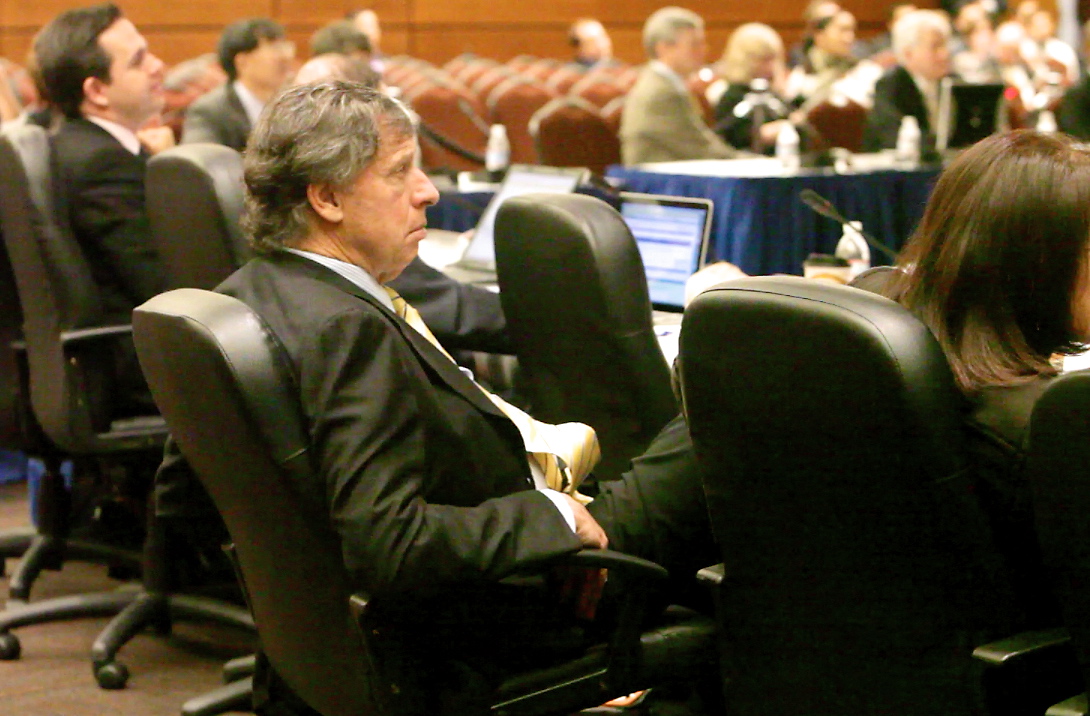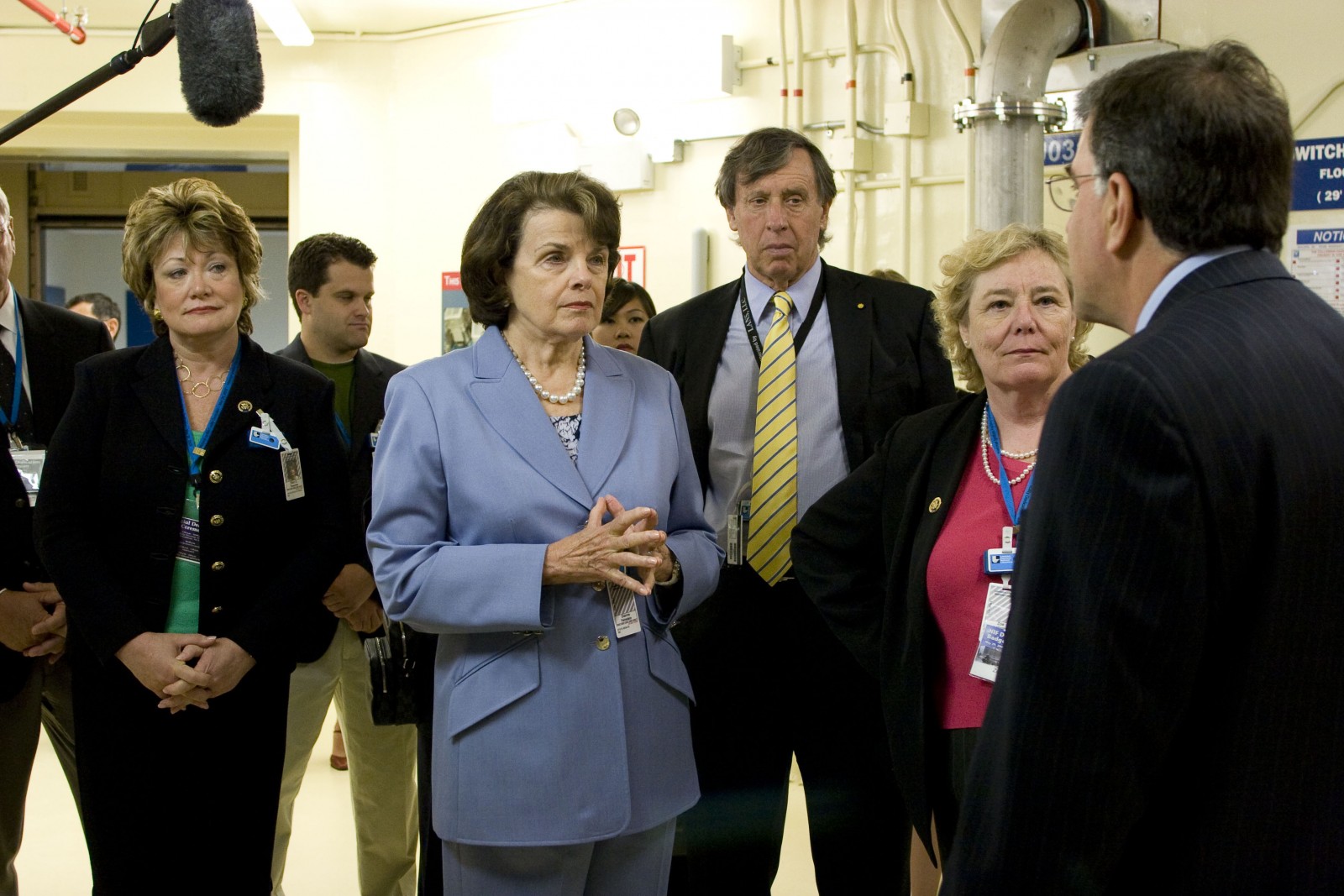
Last December in San Francisco, a few score protestors made a loud demonstration at the offices of Blum Capital Partners in North Beach to protest the closure and sale of historic post offices. Escorted by police on motorcycles, they marched downtown to U.S. Senator Dianne Feinstein’s office. A common theme of the many speeches made that day was that Feinstein had somehow gotten her husband’s firm the contract to sell off the nation’s post offices. FactCheck.org checked the facts and announced that there was no evidence of any conflicts of interest with the CB Richard Ellis Group (CBRE) contract.
FactCheck did not check many facts, however. It called the public relations office at the Postal Service to learn that Feinstein did not secure “a sweet deal” for CBRE. And FactCheck talked to Feinstein’s press secretary, who insisted – as s/he always does – that the senator’s wealth is “separate” from her husband’s wealth: a claim that is, in fact, made nonsensical by California’s strong community property laws and common sense.
Factually, Feinstein, 80, is statutorily entitled to 50 percent of any assets acquired by [her husband and UC Regent head] Richard Blum after they were married. Public records show that she and Blum co-own multiple dwellings in San Francisco and Washington D.C. Their assets are reported to be worth as much as $100 million. In fact, due to the complexity and size of Blum’s multi-billion dollar business empire, Feinstein’s 2012 financial disclosure report runs to 137 pages: By comparison, Senator Jay Rockefeller’s report is eight pages.
Some Real Facts
A native of San Francisco, Richard C. Blum, 77, has chaired the CBRE real estate services conglomerate—valued at $6.8 billion—since 2001. His privately owned investment firm, Blum Capital Partners, L.P. dominates CBRE’s board of directors through its ownership of 6.9 percent of the company’s shares, which were worth $380 million in March 2013.
CBRE board member Jane J. Su is a partner in Blum Capital. CBRE board member Laura D. Tyson, former economic adviser to President Bill Clinton, chairs the trustees of the Blum Center for Developing Economies. The Center’s tax returns list its “non-profit” purpose as, “Developing/leasing real property to non-profit organizations at rates substantially below fair market value.”
Value Act Capital Master Fund, founded by a former Blum Capital Managing Partner, Jeffery W. Ubben, holds 6.5 percent of CBRE. And Goldman Sachs, which has a long history of co-investing in projects with Blum, owns 6.6 percent of CBRE.
As influential players in the Democratic Party, as well as in the Brookings Institution and the Council on Foreign Relations, Blum and Feinstein flanked Barack Obama on stage while he was being sworn in as president for his first term. But the Blumpire likes Republicans, too. CBRE board member Frederick V. Malek is remembered for his leadership of Richard Nixon’s Committee to Re-Elect the President and its bungled burglary of the Watergate Hotel. In 2008, Malek co-chaired John McCain’s campaign finance committee.
CBRE board member Bradford M. Freeman was active in both Bush-Cheney campaigns; he raises big money for neoconservative politicians, including Richard Lugar, John Boehner, Rick Santorum, and Mitt Romney.
No matter which party is in power: CBRE will have a political-in. And inside the Beltway, political power translates into contracts, contracts, and more contracts.
Let’s follow the money: According to CBRE filings with the Securities & Exchange Commission, the company earned 5 percent ($325 million) of its revenue from government agencies in 2012.
The leveraging of public funds for private profit has been the core strategy of Blum’s business plan for decades. His privately-owned investment firm, Blum Capital Partners, controls billions of dollars in public employee pension fund capital that Blum regularly invests in his own business deals. His state-subsidized ventures have included building vastly over-budget municipal airports and tunnels and bridges; manufacturing and selling high-tech weaponry for use in Iraq and Afghanistan; developing and selling prosthetic limbs for soldiers wounded in Iraq and Afghanistan; managing the federal government’s multi-billion dollar real estate portfolio; and owning for-profit colleges whose primary sources of revenue are federally guaranteed student loans and grants authorized by Congress.
Not Bad Work, If You Can Get It
And it turns out that Senator Feinstein, who chairs the Senate Intelligence Committee, regularly mixes politics with business. From 2001 to 2005, Feinstein vetted and approved the awarding of $1.5 billion in military construction contracts to two companies largely owned by Blum Capital Partners: Perini Corp. and URS Corporation.
Not only has Feinstein not recused herself from voting on federal legislation that affects her family’s business empire, she is on record as lobbying both the FDIC and the Postal Service of behalf of CBRE-related deals. By way of ethical contrast, the Washington Post has reported that Supreme Court Justice Joseph Alito regularly recuses himself from weighing in on cases that even indirectly concern public corporations in which he owns stock.
DiFi and the FDICIn April 2009, The Washington Times revealed that Feinstein had introduced legislation to route $25 billion to the Federal Deposit Insurance Corporation (FDIC). A portion of these funds were targeted to market foreclosed properties owned by failed banks. CBRE had subsequently been awarded a $108 million FDIC contract to market these foreclosed properties. The blogosphere went wild with accusations of conflicts of interest. Part of the outrage was due to CBRE having received higher than normal commissions and fees for its services.
In March 2012, the FDIC Inspector General released a redacted report showing that CBRE had consistently overcharged the FDIC for its services. The Inspector General found that eight percent of the CBRE invoices that it had tested were overcharges. Extrapolated to the amount disbursed under the contract, that adds up to $1.1 million in false claims made by CBRE. Nonetheless, FDIC executives decided to not ask CBRE to reimburse the government for the overcharges, asserting that it would cost more to collect the money than it was worth. The FDIC did not renew CBRE’s contract, however.
DiFi and El Toro
On the morning of July 8, 2005, the Investment Committee of Lehman Brothers Holdings, Inc. met on the 20th floor of the investment bank’s Manhattan skyscraper. It approved a $252 million loan to Heritage Fields LLC, a real estate partnership composed of Lennar Corporation, Cerberus Capital Management LP, Rockpoint Group LLC, computer billionaire Michael Dell’s MSD Capital, and the public pension funds for teachers in both New York and California.
Lennar is a major developer of California real estate. The Lehman Brother’s loan financed buying the recently closed El Toro Marine Corps Airstation near San Diego, where Lennar planned to build residential and office space, once the 3,723-acre polluted site was made fit for human habitation by the taxpayer. According to the confidential memorandum prepared for the meeting (found in the Lehman Brother’s bankruptcy filing), “due diligence” on the Lennar project was conducted by CBRE, which “prepared an appraisal of the Project’s planned non-residential uses.”
Fast-forward to 2007: the Postal Service is planning to build a mail processing plant on a vacant 26-acre lot—for which it had paid $7.5 million—in the town of Aliso Viejo, near the El Toro project. Aliso Viejo Mayor Carmen Cave writes to Feinstein, complaining that the plant will be too noisy and polluting. Feinstein writes to Postmaster General, John Potter, asking him to intervene:
“I would ask that you fully consider other alternative sites [for the mail processing plant] within the region. I understand that the Postal Service recently made some inquiries into whether there might be an opportunity for the facility to be built on portions of the former El Toro base being redeveloped by Lennar, but that it did not appear to be a viable option. I would like to ask you to also inquire whether any of the land still retained by the federal government at the former base might be suitable and potentially at a significant cost savings than Aliso Viejo.”
Feinstein did not tell Potter that CB Richard Ellis and CBRE Consulting, Inc. were working closely with Lennar on a number of military base redevelopment projects in California, including El Toro, where Lennar was planning to build a commercial hub surrounded by residences. No doubt, a postal facility would have fit in nicely as a business anchor. After receiving Feinstein’s letter, Potter killed the Aliso Viejo project and the $7.5 million plot of land went fallow.
Lennar’s $1.4 billion El Toro project stalled after Lehman tanked at the onset of the subprime loan crash. A half-decade later, it is picking up steam and, according to CBRE’s Website, “CB Richard Ellis has been chosen to consult on the entire project as well as to provide brokerage services.” In a remarkable synergy of events, CBRE is also brokering the sale of the abandoned Aliso Viejo lot.
Feinstein’s Communications Director Brian Weiss commented that, “Senator Feinstein frequently communicates with federal officials on behalf of California constituents and local officials.” Cave, however, had said nothing about El Toro or Lennar in her letter to Feinstein.
DiFi Emails
Emails between Senator Feinstein’s aides and Postal Service staff obtained under FOIA reveal that from mid-2011 through mid-2102, a Feinstein aide asked for updates about which postal properties were slated to be sold (by CBRE, of course). He also asked if historic place and environmental protection laws can stop post office closures, even as CBRE was conducting the historic place and environmental protection reviews for these same properties.
“My boss is just curious,” wrote Feinstein staffer, David Hantman, to Mary Ann Simpson of the Postal Service on May 24, 2012, regarding his request for a list of post offices on the National Register of Historic Places. Previously, he had asked if the National Environmental Protection Act (NEPA) applied to post office closures. He now asked, “Has Postal Service faced this [historic protection] argument from any post offices being looked at for closure, and if so do you have any info. I may be able to pass to Sen. Feinstein?”
Simpson wrote back that the Postal Service is “categorically excluded” from having to comply with NEPA, even though the agency [CBRE, in fact] would generate, “NEPA documentation [to] screen for extraordinary circumstances and demonstrate consideration of environmental impacts.” In the context of CBRE’s contract, Hantman’s query is significant, as a legal challenge to the CBRE-brokered sales claims that the Postal Service is not exempt from these types of reviews.
In February, 2012, Hantman told Simpson: “My boss has asked for any potential amendment ideas to the Postal Service reform bill. I’ve got a few ideas that I wanted to run by you if you have a few minutes to talk.” Legislative details inserted into postal bill amendments could certainly have influenced CBRE’s business with the Postal Service, especially in terms of whether post offices are exempt from complying with NEPA and historic preservation laws.
This is a chapter excerpt from the author's new ebook, "Going Postal: U.S. Senator Dianne Feinstein's husband Sells Post Offices To His Friends, Cheap."
3 WAYS TO SHOW YOUR SUPPORT
- Log in to post comments














